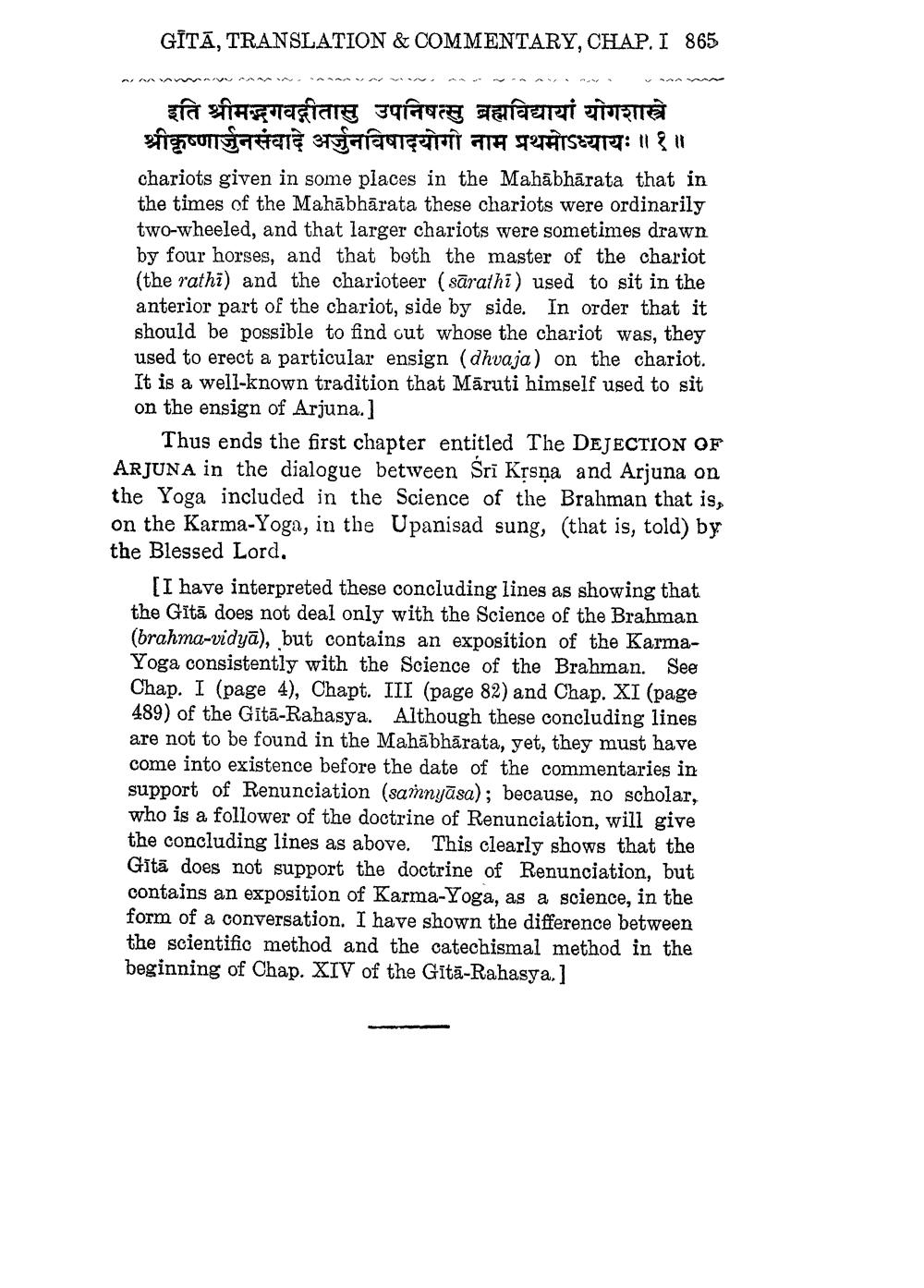________________
GĪTĀ, TRANSLATION & COMMENTARY, CHAP. I 865
Wawa
इति श्रीमद्भगवद्गीतासु उपनिषत्सु ब्रह्मविद्यायां योगशास्त्र श्रीकृष्णार्जुनसंवादे अर्जुनविषादयोगो नाम प्रथमोऽध्यायः॥१॥ chariots given in some places in the Mahābhārata that in the times of the Mahābhārata these chariots were ordinarily two-wheeled, and that larger chariots were sometimes drawn by four horses, and that both the master of the chariot (the rathi) and the charioteer (sārathi) used to sit in the anterior part of the chariot, side by side. In order that it should be possible to find out whose the chariot was, they used to erect a particular ensign (dhvaja) on the chariot. It is a well-known tradition that Māruti himself used to sit on the ensign of Arjuna.]
Thus ends the first chapter entitled The DEJECTION OF ARJUNA in the dialogue between Sri Krsna and Arjuna on the Yoga included in the Science of the Brahman that is, on the Karma-Yoga, in the Upanisad sung, (that is, told) by the Blessed Lord,
[I have interpreted these concluding lines as showing that the Gitā does not deal only with the Science of the Brahman (brahma-vidyā), but contains an exposition of the KarmaYoga consistently with the Science of the Brahman. See Chap. I (page 4), Chapt. III (page 82) and Chap. XI (page 489) of the Gitā-Rahasya. Although these concluding lines are not to be found in the Mahābhārata, yet, they must have come into existence before the date of the commentaries in support of Renunciation (samnyāsa); because, no scholar, who is a follower of the doctrine of Renunciation, will give the concluding lines as above. This clearly shows that the Gitā does not support the doctrine of Renunciation, but contains an exposition of Karma-Yoga, as a science, in the form of a conversation. I have shown the difference between the scientific method and the catechismal method in the beginning of Chap. XIV of the Gitā-Rahasya.]




